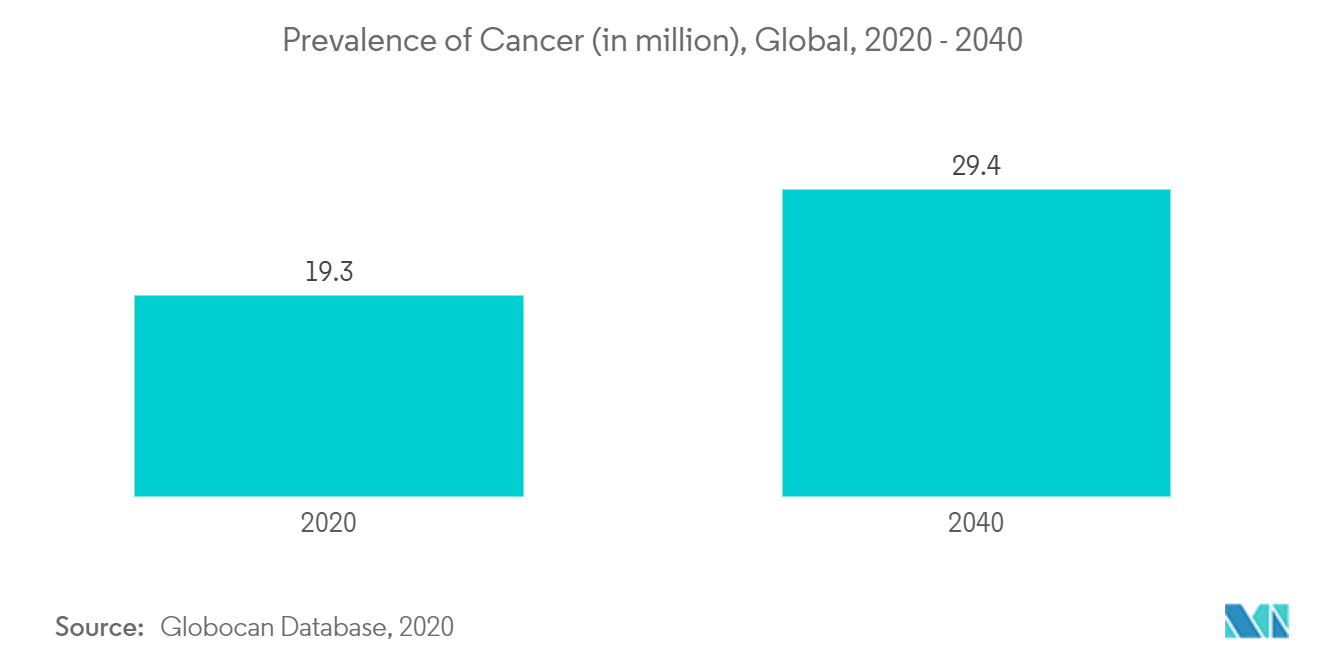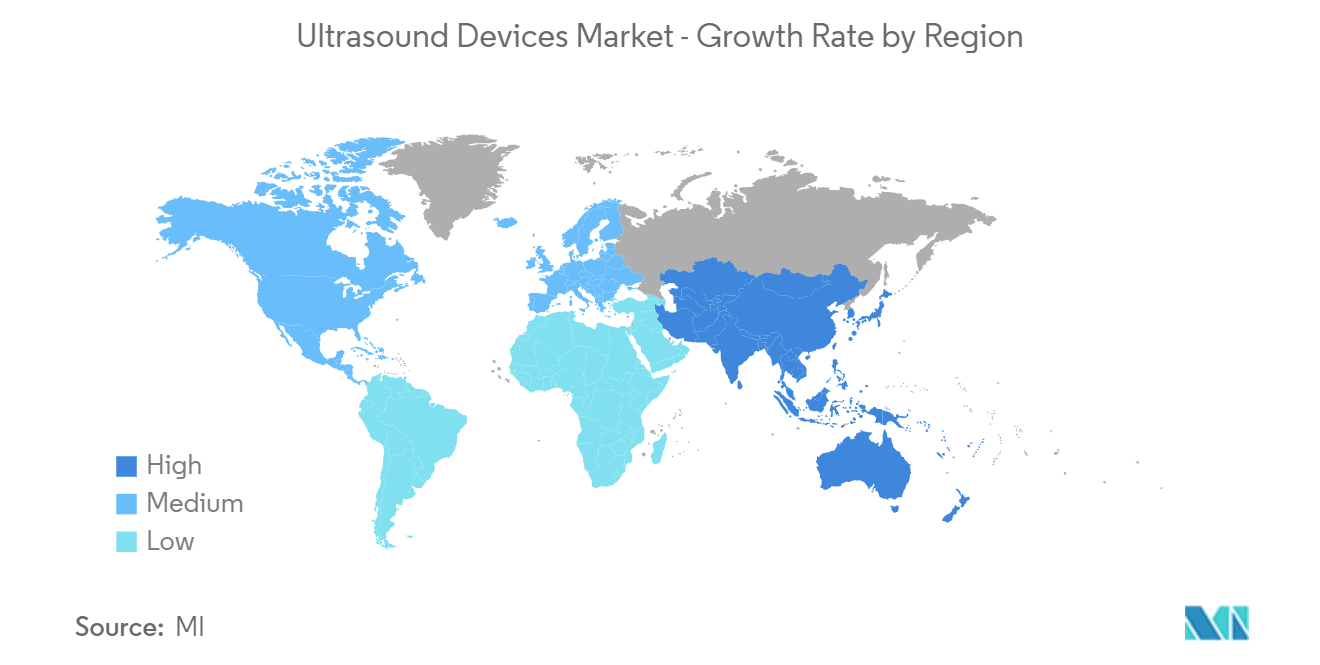Market Trends of Ultrasound Devices Industry
The Stationary Ultrasound Segment is Expected to Hold a Significant Market Share During the Forecast Period
The stationary ultrasound segment is expected to hold a significant market share. The significant market share of this segment is attributed to the growing adoption of these systems across major markets due to their increased usage in acute care settings and emergency care in hospitals and healthcare institutions.
Also, these ultrasound systems have been undergoing major technological transformations since the last decade, which is leading to the increasing application of these systems. For instance, in June 2022, Mindray launched a new ultrasound product to address the unique demands of busy OB/GYN practices: the Imagine I9 Ultrasound Machine. Additionally, in March 2021, General Electric launched its new wireless, hand-held ultrasound device, Vscan Air.
Besides, continuous technological advances and the increasing geriatric population around the globe are leading to increased incidences of various chronic diseases, as the geriatric population is more susceptible to chronic diseases, hence propelling market growth over the forecast period. For instance, according to the World Population Ageing Report for September 2020, there are more than 46 million older adults aged 65 and older living in the United States, and by 2050, that number is expected to grow to almost 90 million.
Such a huge prevalence of chronic disease will lead to market growth. Thus, owing to the abovementioned factors, the market segment is expected to show growth over the forecast period.

North America Holds the Large Market Share and is Expected to Continue To Do So Over the Forecast Period
When COVID-19 created havoc in this region and various diagnostic imaging facilities went down, Intelligent Ultrasound Group took this as an opportunity to increase the grounding of its point-of-care ultrasound simulator in this region and launched a COVID-19 training module for its state-of-the-art BodyWorks point-of-care ultrasound simulator, in order to train healthcare providers to rapidly acquire and practice lung ultrasound skills in the diagnosis of COVID-19. The factors responsible for the growth of the North American ultrasound market are government and private funding for R&D in ultrasound imaging, the increasing number of healthcare providers, the increasing geriatric population, and rising incidences of chronic diseases. Also, the most prevalent form of chronic disease is cardiovascular disease, which caused an estimated 17.9 million deaths globally and accounted for about 32% of the total deaths around the world, as per the June 2021 report of the World Health Organization.
Owing to the high prevalence of diseases, this region has become the hub for the major players. According to the Centers for Disease Control and Prevention (CDC), in 2021, around 18.2 million adults aged 20 and older will have coronary artery disease (CAD) in the United States. The high incidence of cardiac diseases increases the demand for huge diagnostic procedures, which, in turn, drives the market. Players have been doing product development in this region to grow. For instance, in July 2021, medical device company Exo released a new handheld ultrasound device that will enable clinicians to diagnose various conditions in real time. Similarly, in March 2021, GE Healthcare launched Vscan Air, a cutting-edge, wireless, pocket-sized ultrasound that provides crystal clear image quality, whole-body scanning capabilities, and intuitive software-all in the palm of the clinician's hands. Similarly, in April 2019, Canon Medical USA Inc. launched the Aplio a-series, a new line of ultrasound systems delivering high performance for multiple clinical uses at an affordable price point. Also, rising healthcare expenditure, growing awareness of various diagnostic procedures, and favorable reimbursement policies are expected to fuel market growth in this region.
So, because of the things listed above, the studied market in North America is expected to grow over the next few years.


